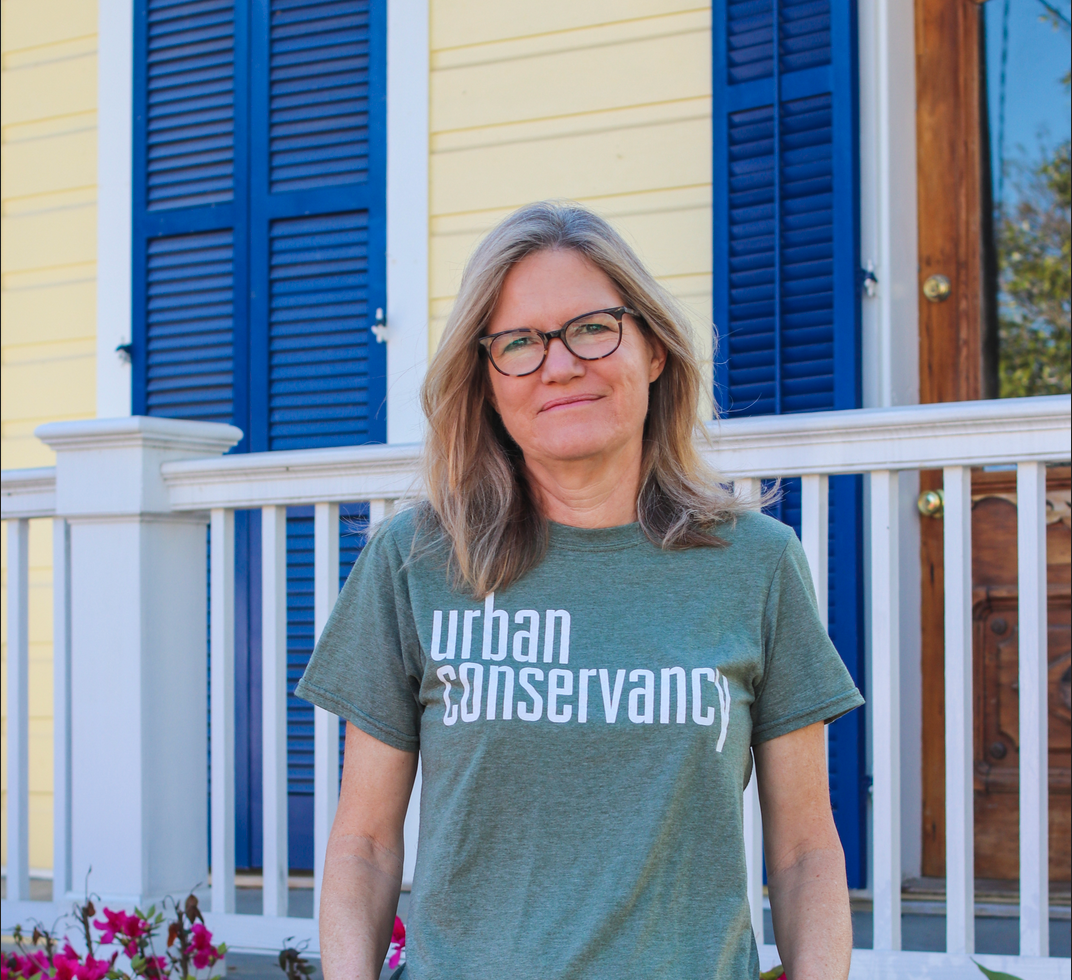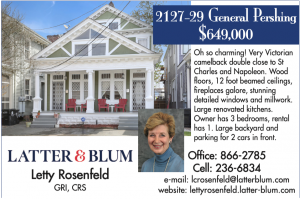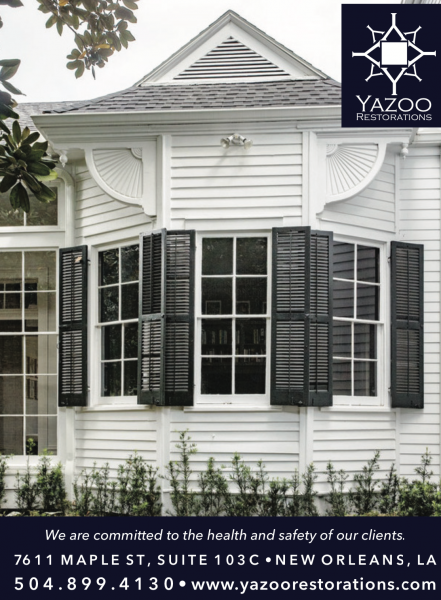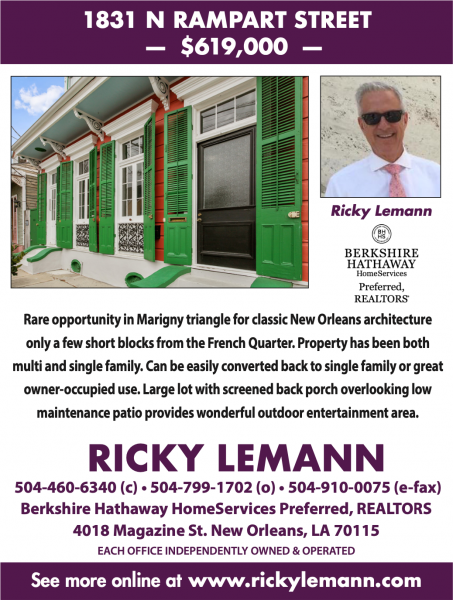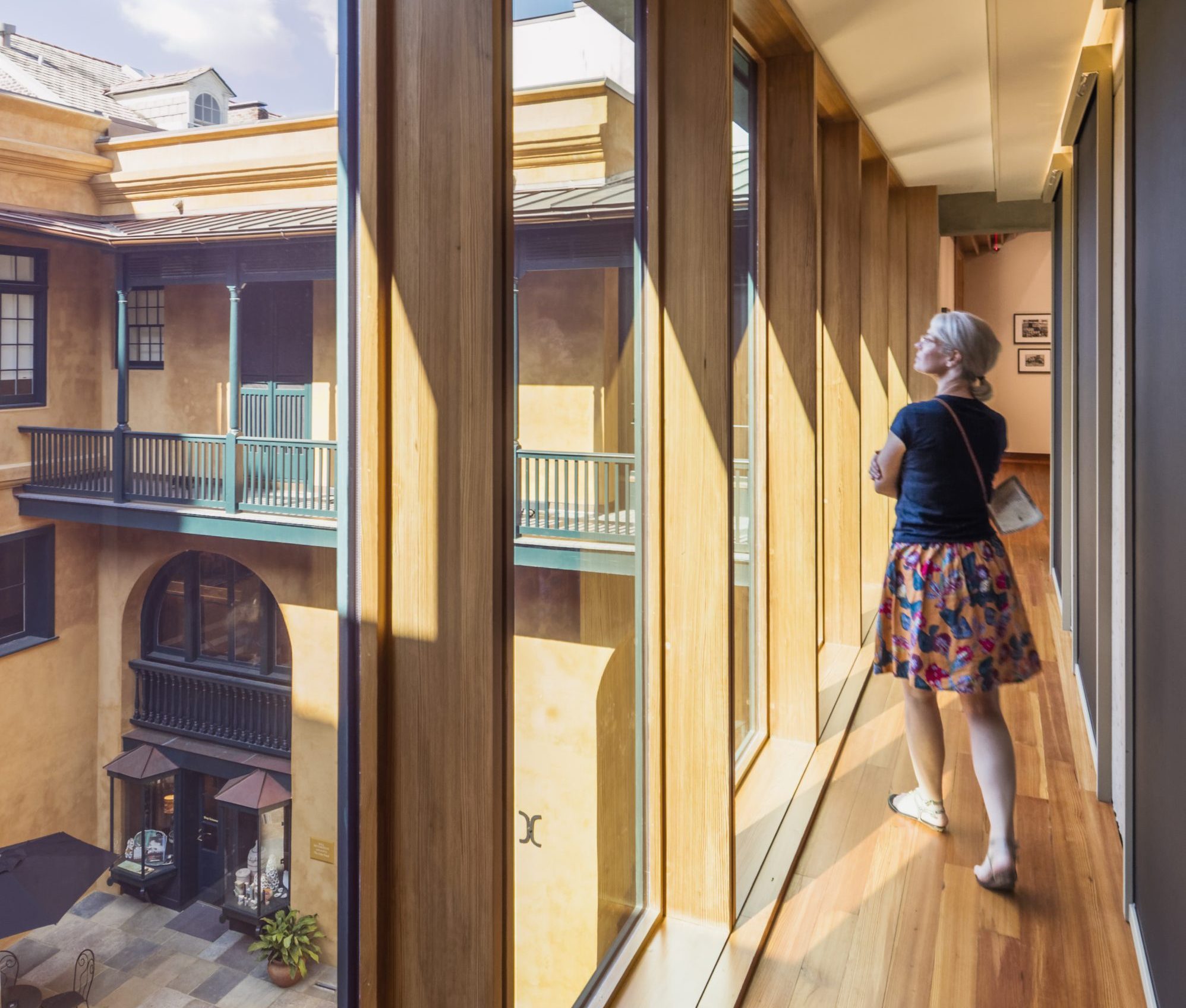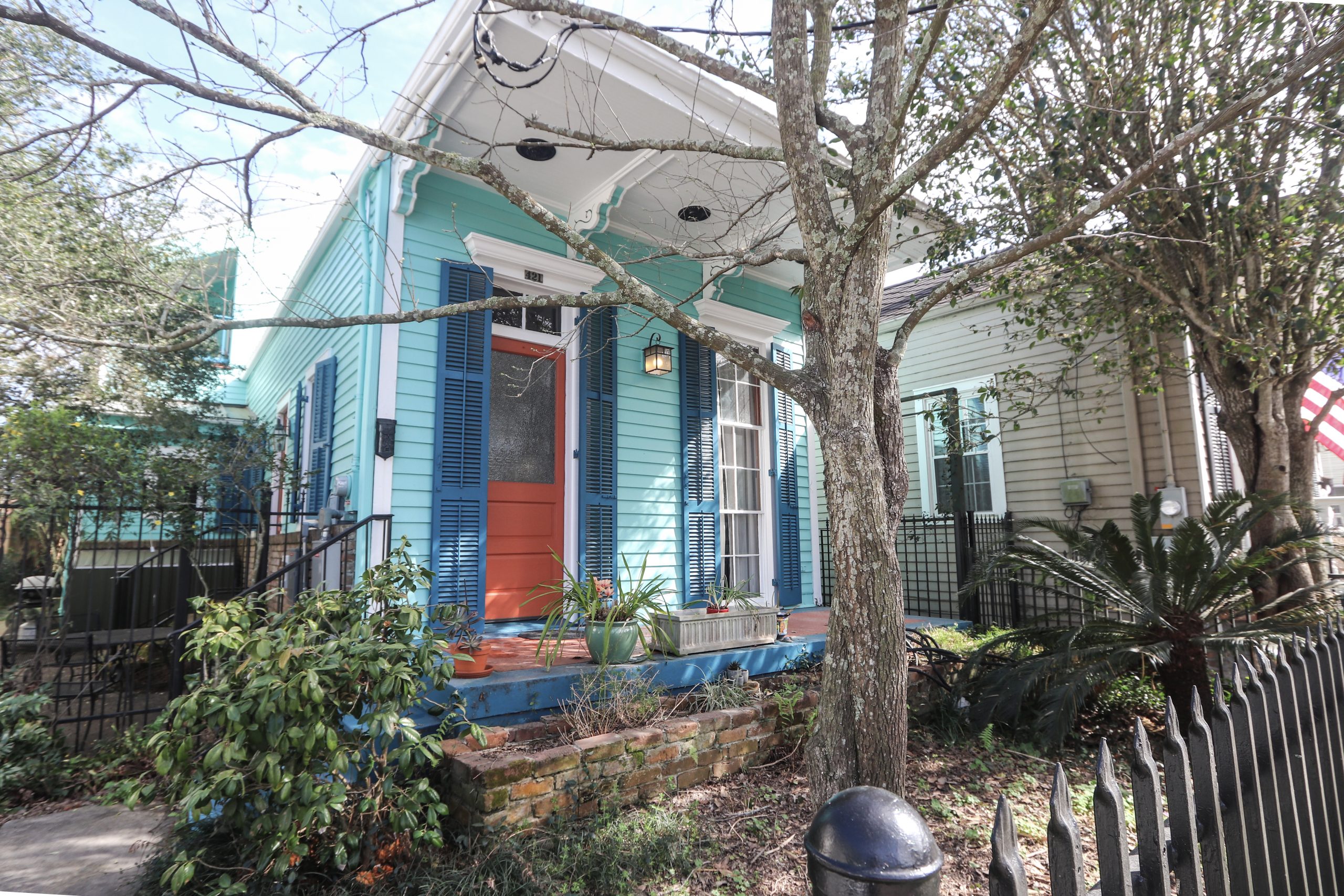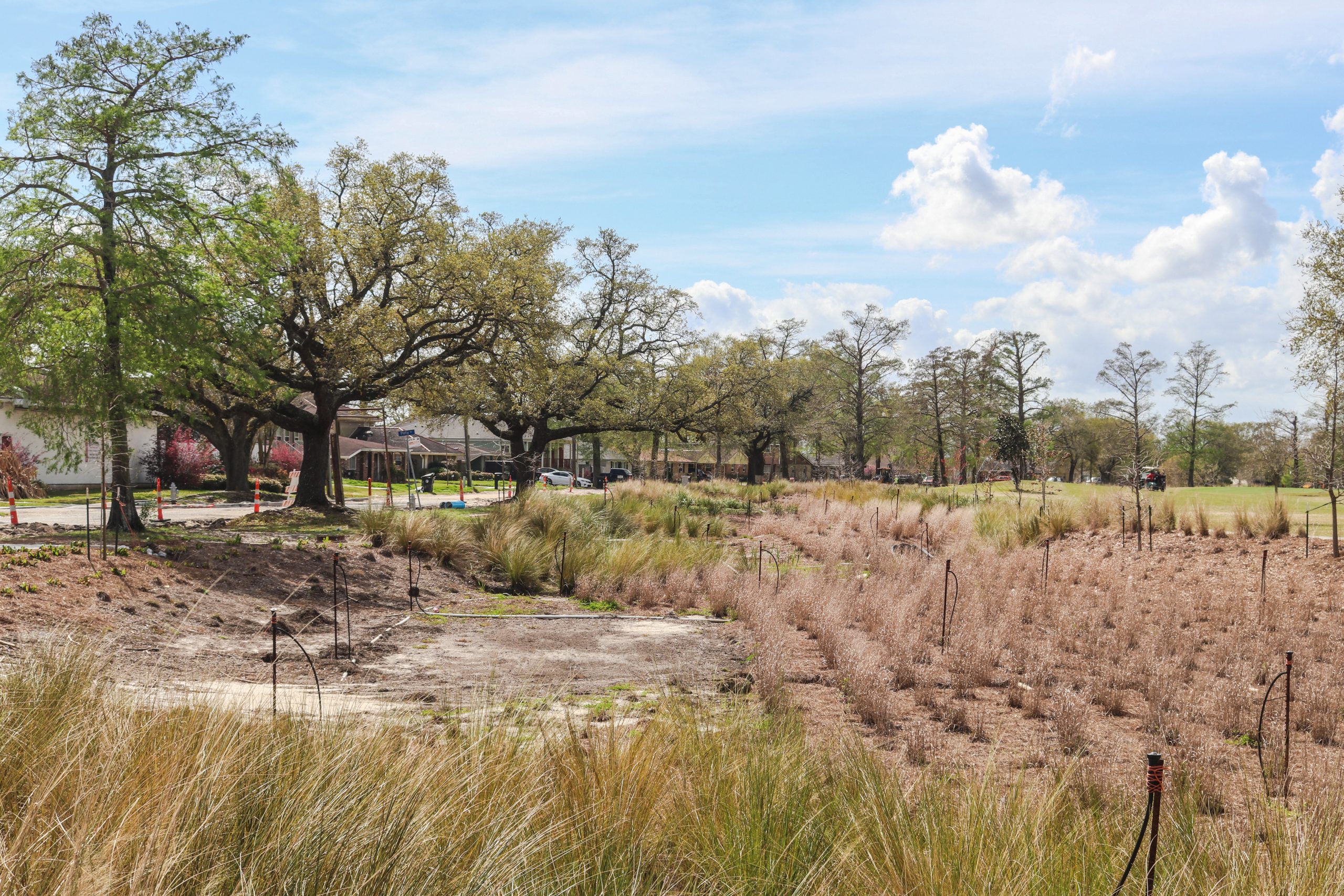This story appeared in the April issue of PRC’s Preservation in Print magazine. Interested in getting more preservation stories like this delivered to your door nine times a year? Become a member of the PRC for a subscription!
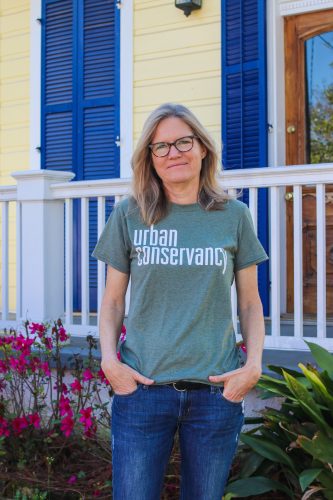 I’m a Preservationist
I’m a Preservationist
Dana Eness – Executive Director, The Urban Conservancy
The Urban Conservancy’s Front Yard Initiative (FYI) helps residents to rip up excessive concrete around their homes. Excessive concrete can exacerbate flooding. Tell us how that program got started and how it works.
The program started in about 2014 with a frustrated constituent trying to bring some attention to the fact that people in his Uptown neighborhood were paving their front yards, in violation of city regulations, in order to reduce maintenance and increase off-street parking, and there didn’t seem to be any enforcement. We partnered with The Lens news website (excessive paving was an issue that Lens founder Karen Gadbois was reporting on) and invited neighborhood leaders and city staff to come together to discuss the issue.
From that dialogue, we realized that, in addition to people intent on paving, there were many people who had more paving on their property than they wanted but just didn’t know how to go about getting rid of it. We decided we wanted to focus on helping those who wanted to transform their property so it would hold rain where it fell rather than run off and contribute to our street flooding and overburdened pumping system.
Advertisement
What has been the response to the initiative? How many homeowners have you helped? And how much flooding do you think it prevented?
The response to FYI is overwhelmingly positive. Last summer, we surveyed homeowners who had installed green infrastructure between 2015 and 2020 through our Front Yard Initiative. They were very satisfied with both the aesthetics and the functionality of their transformation, and satisfaction with both increased over time. Most people come to our program with a specific problem they are having with standing water on their property. Eighty percent of the homeowners participating in our program reported moderate to severe flooding on their property before installing green infrastructure. Once projects were complete, severe flooding was completely eliminated. Because green infrastructure becomes even more effective over time as native plants and their root systems mature, we can expect flood risk to continue to diminish on FYI properties over time.
We’ve been able to financially assist 104 homeowners with a taxable incentive since 2015. Those homeowners have collectively removed 65,000 square feet of paving from their properties, creating storage capacity to keep an estimated 102,000 gallons of flood water out of our streets and catch basins per rain event. That’s a couple million gallons annually that never make it to our pumping stations. But this is only a drop in the bucket (ha ha) in the overall impact of the program, as we only collect data on those projects we are financially supporting. We’ve provided technical assistance to thousands more through the many resources we create and share, including our popular Green Sector Directory, all designed to make the process of going from gray to green as time- and cost-effective as possible.
Tell us about the other programs of the Urban Conservancy.
In addition to the Front Yard Initiative, the Urban Conservancy has two other core programs. StayLocal is Greater New Orleans’ “buy local first” initiative, which was founded in 2003 to support our local business owners by connecting them to resources, consumers and each other in order to create a strong local economy. BASIN (Building Active Stewardship in New Orleans) is the Urban Conservancy’s water stewardship and environmental literacy program for school-aged children. By giving them the tools they will need at an early age, we are preparing the environmental leaders of tomorrow.
Advertisement
Prior to the pandemic, the Urban Conservancy held a “Future of Mardi Gras” forum to explore ways to reduce waste at the city’s most beloved celebration. While we couldn’t hold parades this year, are you hopeful that once the pandemic is over some of the ideas from the forum will be used?
A resounding message we heard from the 300-plus attendees at the Future of Mardi Gras forum in 2018 was that Carnival is “about the show, not the throw.” Creatively expressing ourselves for the enjoyment of others and being entertained by other creative souls — through costumes, floats, marching krewes and clubs, music, dancing, satire, you name it — is what enthralls year after year. This year’s House Floats phenomenon and how people responded to them, and the other ways they found to celebrate Carnival season, despite sub-freezing weather, was definitive proof that millions of pounds of single-use plastic throws do not make Mardi Gras the special event that it is; the people do.
You live in the Riverbend neighborhood. What do you love most about it, and what does preservation mean to you?
I’ve lived in my house in the Riverbend for more than 25 years, a block or two from the Mississippi River and a block or two from Oak Street, both places I love very much. Oak Street inspired me to get involved with StayLocal as a founding board member in 2003. Having lived in places where the locally owned businesses had been usurped by big box stores, I recognized that having a dynamic, diverse and very personal shopping corridor within walking distance of my home was not something to be taken for granted.
Advertisements



